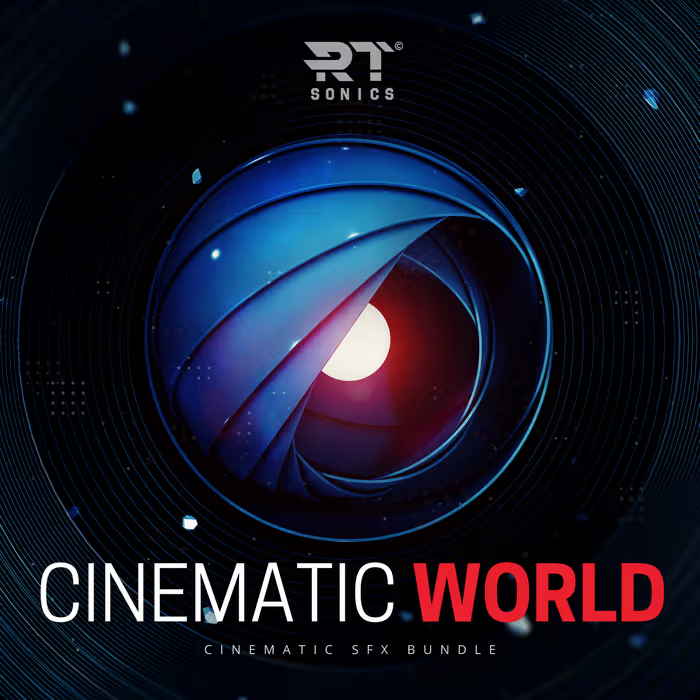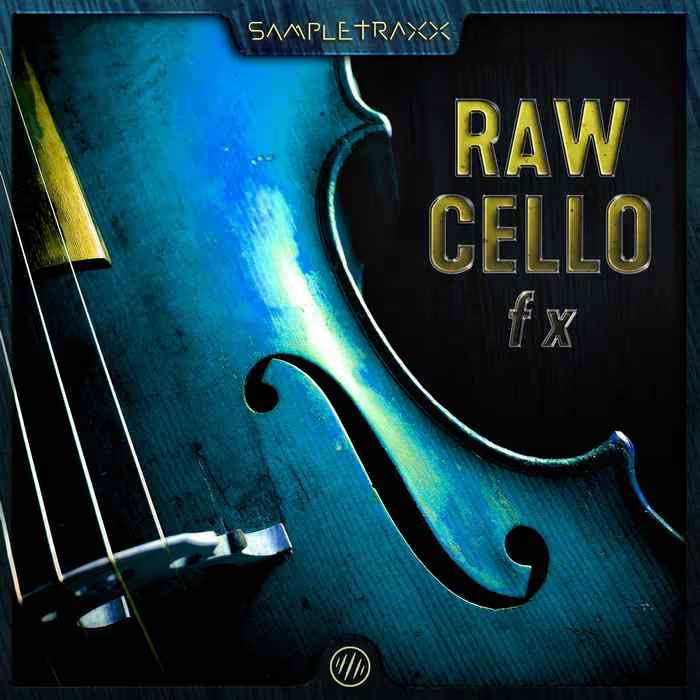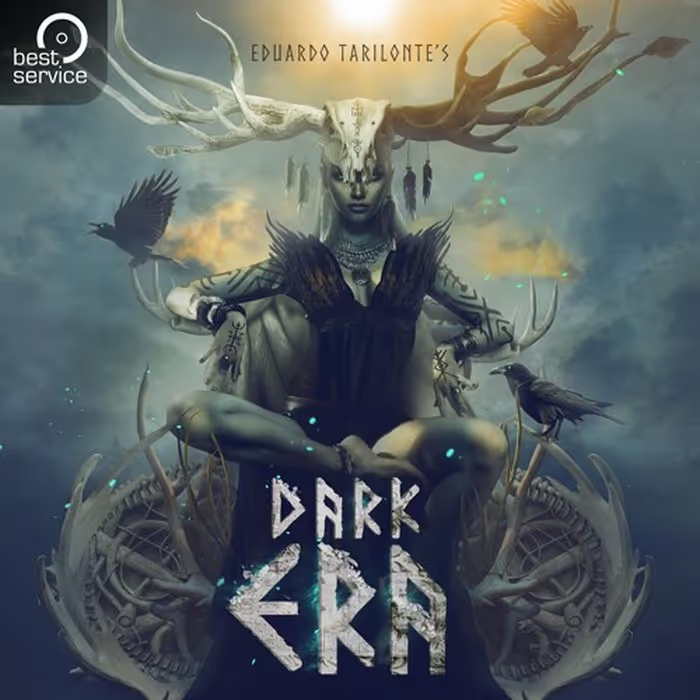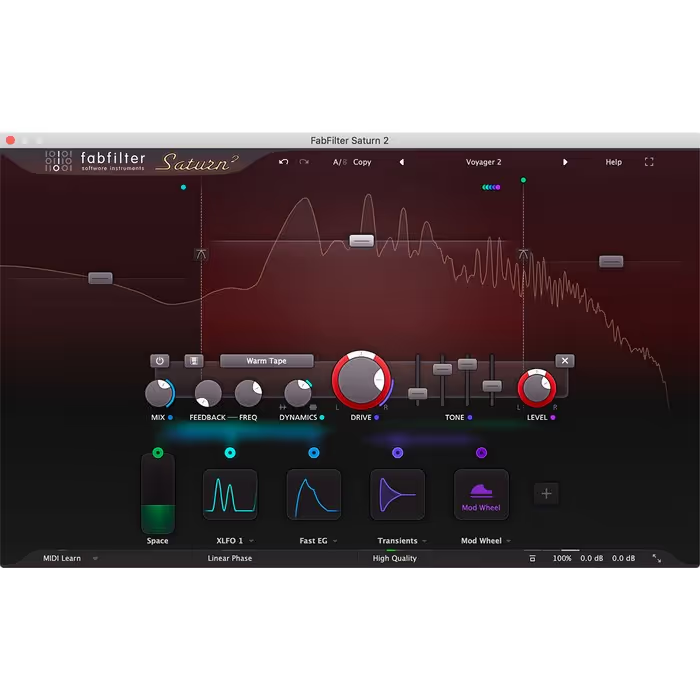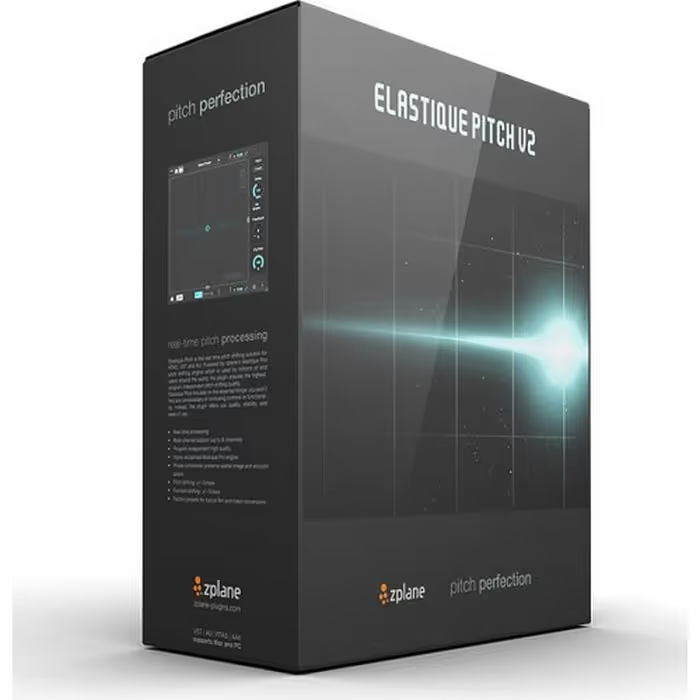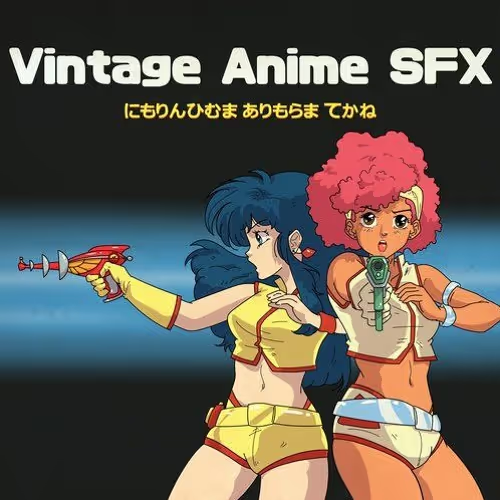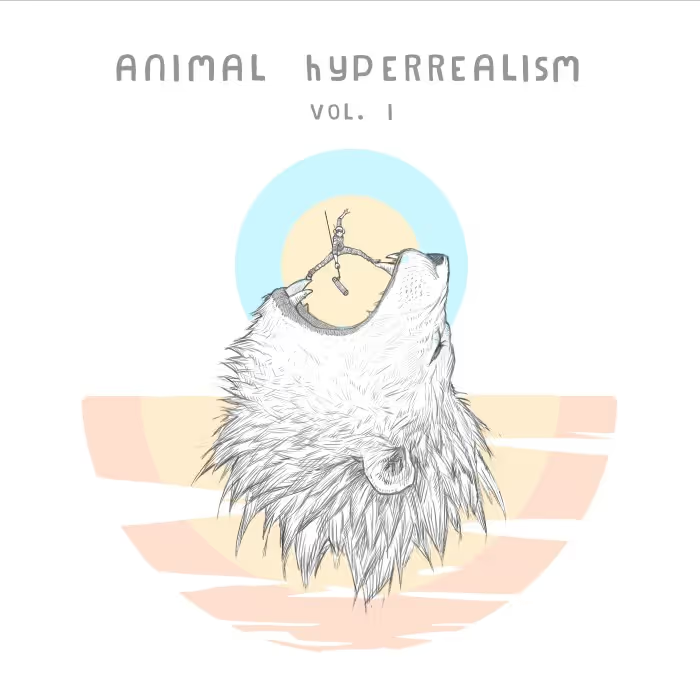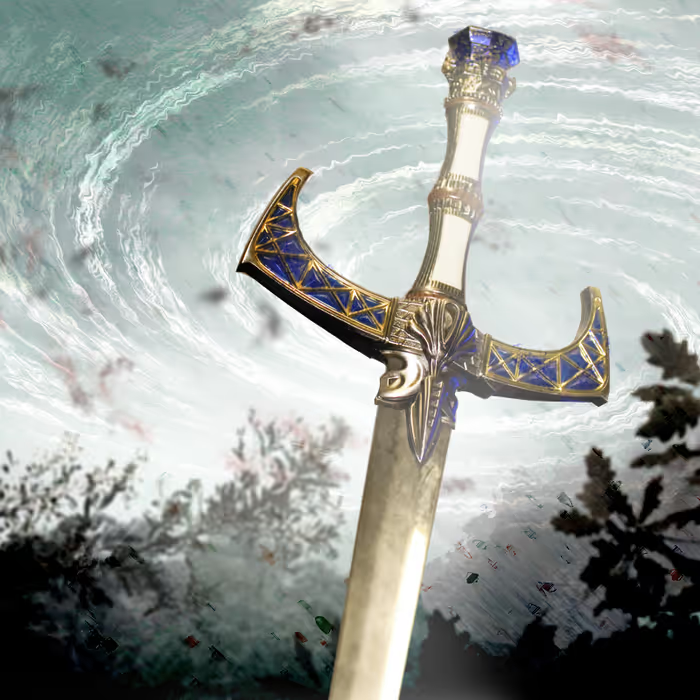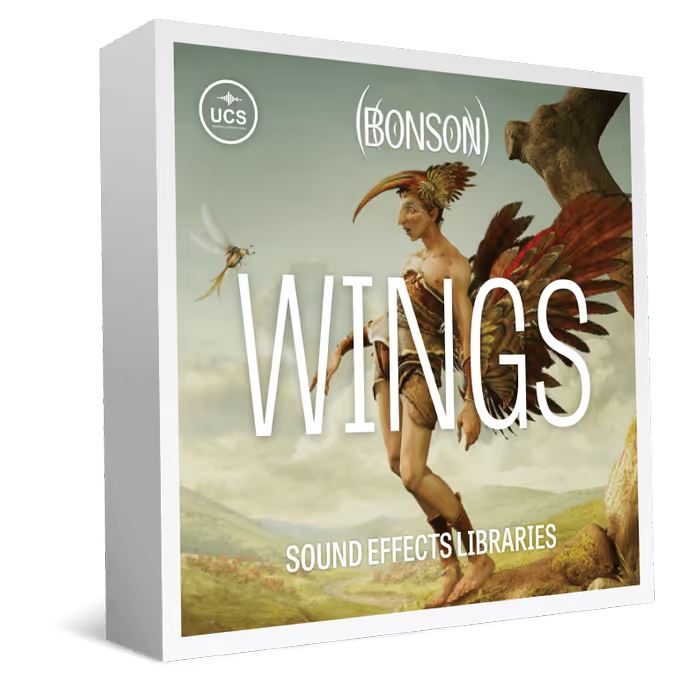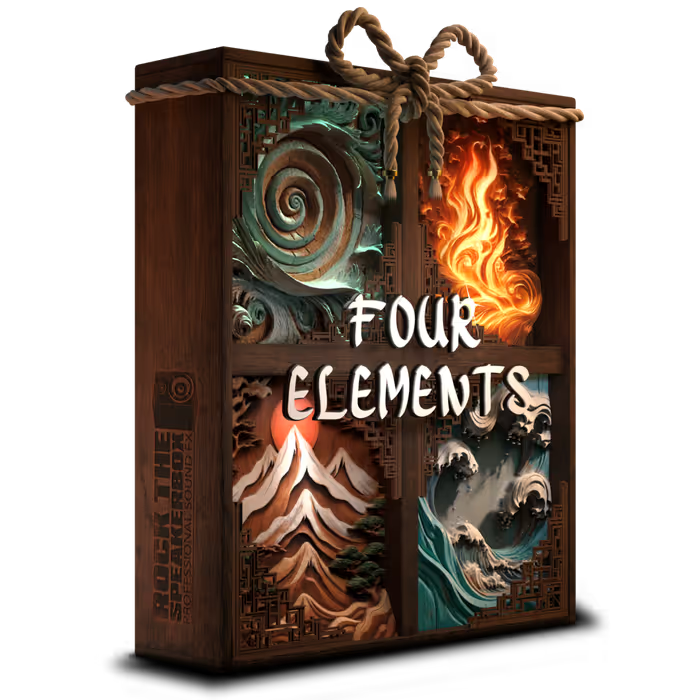The Composer Success Series is dedicated to helping you succeed as a composer – offering inspiration, advice on getting started and advancing your career, creative tips and tricks, helpful resources and lessons learned, from some of the industry’s most successful composers for film, games and beyond.
• Pinar Toprak – composer on the Captain Marvel, The Wind Gods, and The Tides of Fate
• Nainita Desai – composer on The Reason I Jump, American Murder, and For Sama
• Jonathan Snipes – composer on A Glitch in the Matrix, The El Duce Tapes, and Murder Bury Win
We have a lot more interviews coming up for you in the Composer Success Series – and will be releasing them all as a completely free e-book.
Want to receive the free book as soon as it’s out?
Enter your details in the form and we’ll send you a link to the book as soon as we release it. The list won’t be used for anything else, and you can of course unsubscribe at any time.
Pinar Toprak:

Los Angeles-based composer Pinar Toprak is best known for her scores on Marvel Studios’ Captain Marvel, Epic Games’ Fortnite, and HBO mini-series McMillions.
Pinar was the recipient of the 2019 ASCAP Shirley Walker Award and also won the 2019 IFMCA (International Film Music Critics Association) Award for “Best Original Score for a Documentary Film” for her score on The Tides of Fate. She also won two previous IFMCA Awards for her scores on The Wind Gods, and The Lightkeepers which was on the Academy Award shortlist for “Best Original Score” in 2011.
Find out more about Pinar’s work at www.pinartoprak.com.
• How did you get started as a composer? What was your very first score-to-picture gig, and what was that experience like for you?
My first gig was a short film. I was working for Hans Zimmer as a programmer and around that time (actually, right after I stopped working for Hans), I started working for another composer named William Ross. There was an opportunity to work with David Ellison, who back then was an up-and-coming filmmaker but he’s now a very established producer and founder/CEO of Skydance Media.
David was doing a short film while attending USC (School of Cinema-Television) and I got hired to score his short film. That was very, very special for me. That music became the demo for this video game that, super randomly, I got hired on. They basically got a hold of my demo that I had done for David’s short, and just based on that, they hired me for this video game called Ninety-Nine Nights for Xbox 360.
I’ve been in LA about 21 years, and so my ‘overnight success’ took about two decades and over 40 films.
That was really unheard of because I was only about 23 or so at the time, with barely any composing credits. I just got hired based on that score for the short film.
That then led to my first feature film. I had done a lot of little things, but the first considerable film was Behind Enemy Lines II: Axis of Evil.
And that happened because of the video game I had done. So it was like everything kind of led to the next thing.
After that, it’s been a lot of hustling. I’ve been in LA since 2000, and before that I was in Boston for Berklee, and then I lived in Chicago. But I’ve been in LA about 21 years, and so my ‘overnight success’ took about two decades and over 40 films.
• Any advice to share on how to land a composing job in the film industry?
I think everyone’s path is different. So many of my friends have all done things differently and that’s a good thing because that tells us that there’s not one way of doing something and that everyone is unique.
The one common factor is really perseverance. Obviously, granted, your craft needs to be good. You need to constantly keep on top of technology and everything that’s evolving because things change in our world faster than we can say ‘technology.’ That’s really important and so is the musicianship itself.
All of those things being given, the other thing is really just perseverance and knocking on as many doors as you can, and sending out your music to as many people as you can. It’s really about increasing the odds because there are so many people who want the same thing that we all do.
Personal relationships are really important. For me, it was really important to develop relationships and trust because, especially when you were talking about a film, we come in at the end of a project. Up until that point, a filmmaker has spent so much time getting that film made until it lands in my studio. So it’s important to be able to develop that trust and communication, and to look at a film more as a filmmaker and not necessarily as an opportunity to show off the music. It’s really about: how can you make the film better? How can you tell the story better?
It’s really about: how can you make the film better? How can you tell the story better?
That to me is really, really important because there is a difference between getting a job and building a career. A lot of people can get a gig at some point if they stick around long enough. But I think building a career requires a bit more investment in relationships and in building our craft in every way.
So I just started a little, personal side projects. I play several instruments. I play most string instruments. I started out as a violinist, so I know the anatomy of most string instruments and I have a degree in classical guitar. So I can do most things that are in that world. And piano, too. And I’ve studied and continue to study orchestration.
…building a career requires a bit more investment in relationships and in building our craft in every way.
However, the last couple of years, I thought, ‘I feel a bit like an imposter if I write for an instrument I really never played.’ So I started this project where I start from the top of the score page, with woodwinds, and I buy every single instrument and devote a few months to each instrument. And so now I’m actually taking flute lessons. I hadn’t ever played flute before. So I bought myself a flute and I’m enjoying learning that.
I know I’m not going to be great at it, and I’ll probably never play on one of my scores, but at least it’s going to make that communication with a player in the future a lot more organic because I’m going to know what they’re going through, so to speak.
• What are some essential lessons you’ve learned throughout your career?
There are so many lessons and I keep learning them to be honest.
I wouldn’t say these are ‘lessons’ but these are things that I’ve been kind of aware of from the beginning.
• Relationships. Just touching on what I said before, it really is all about your relationship. That can really make or break a project.
• Communication skills. Some of the things that I learned the most from being at Hans’ place — even more than the technology and the music and everything else — was how he would talk to filmmakers. That’s an art of its own, being able to communicate. I think that’s something really important for anybody that’s starting out. We, as composers, are very lonely creatures. We’re alone in a room, creating. (That’s why pandemics sadly suit us!). But I think it’s really important to note that this is a team sport. Even though what we do is a lonely gig in our room, when you zoom out it’s a team sport.
That is probably the biggest lesson, knowing you’re part of a bigger thing.
• Any favorite tricks and workflows tips that help when composing for film?
Time management is really important and being efficient in your setup is really important. It just reduces anxiety in every way. So for me, when I’m not on a crazy deadline with a project, that’s when I update things and make my template as efficient as possible so that technology is working for me rather than the other way around. That’s really important.
Everyone’s workload is different; whatever software you’re using is the best one for you. I use Cubase and I look at it more than I look at most things in life, so for me it’s important to get the technology side of it working really well. So when I’m actually on a film, I’m thinking creatively, and I’m not micromanaging technology.
…the way I usually start films is to create suites before I actually write any specific cue to the film.
In terms of creating stems or this and that, just general file management and the signal flow of everything is very important for me.
Also, the way I usually start films (and I’ve been doing this for a little while now) is to create suites before I actually write any specific cue to the film. I find this is really helpful because it establishes the sound palette and the themes that we’re going to have in the film with the filmmakers. Then everybody starts off on the right foot, so to speak. Everyone knows, ‘okay, this is the sonic world that we’re going to live in.’ And everyone gets used to themes and this and that. Sometimes, it can be a thematic score. Sometimes it’s more of a soundscape. Whatever is the main ingredient (i.e., the forefront sound of the score), I think it’s good to crack those codes first.
Then I dive in cue by cue, and it becomes a bit of a time management thing, especially with several projects going on at the same time. It’s kind of like a math equation we have to figure out to stay on track: I have this many minutes that I need to deliver by this date, so I have to write these many minutes per day. Rather than approaching it in a romantic kind of way, for me it’s just taking chunks and knowing that even though I have this massive score to write these minutes are the only things that I need to worry about today. That helps with my workflow.
It’s kind of like a math equation we have to figure out to stay on track: I have this many minutes that I need to deliver by this date, so I have to write these many minutes per day.
But first, definitely, it’s coming up with the themes and sounds.
As for my template, I have this Lemur controller app set up with a touch surface and I also use another Steinberg controller as well and a FaderMaster. I like anything that I can actually, physically touch and manipulate that way. The macros in Cubase are fantastic. I started out working as a programmer, so I try to think of how I can combine a few things together and make things more efficient.
That’s such a personalized workflow approach. I know how my brain works and the steps that I take usually when I edit something or do something. So I try to do whatever I can to make the workflow as fast as possible. I completely geek out on fine-tuning my setup.
• What are your favorite sites and resources for composers?
On technology side of it, there are so many resources. I love VI forum . YouTube is great. And Steinberg’s forums; I check those regularly. All of those sites are generally it for me.
I’m one of those people that read the manual so a lot of time it’s really just like, ‘okay, I’m sure this is covered somewhere in the thousands of pages of this manual.’
I love information and I love learning things. I’m generally a very curious person.
• What’s one special thing you did to become a successful composer?
I don’t know because I’ve done things my way and I wouldn’t know how to do them a different way.
For me, I try to live an honest life, as much as possible. I think when you’re passionate and honest that kind of transcends and also it’s infectious to other people. I think passion is really everything. And when I work with filmmakers — and even the people that work with me — when I feel their passion and their genuine interest and enthusiasm, that is infectious. You just want to be around it. So I think that probably might have been it.
I think the imposter syndrome is a very real one with composers and with artists in general. I always feel like I can learn more, I can do more, and I don’t know enough. So that keeps me going.
But like I said, for me, I’m always trying to be better than I was yesterday, which is really annoying because you can never rest. You can never be like, ‘Okay, cool. I can just chill forever.’ You know?
I think the imposter syndrome is a very real one with composers and with artists in general. I always feel like I can learn more, I can do more, and I don’t know enough. So that keeps me going.
As far as what makes a successful composer, it’s a lot of things, a lot of ingredients that come together. I’ve been devoted to this my whole life. It wasn’t a decision made later on, not that there is anything wrong with that. I’ve been studying music since I was a little kid. So in terms of the education, that was there. And in terms of really devoting my time to building a network, I think it took all of it and of course some luck sprinkled along the way, for sure. But as the saying goes, the harder I worked, the luckier I got…
[tweet_box]What it takes to get started & succeed in composing for Film (Pinar Toprak, Nainita Desai & Jonathan Snipes):[/tweet_box]
↑ Back to top
Nainita Desai:
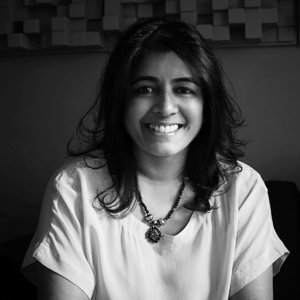
Royal Television Society award-winning composer Nainita Desai is an Ivor Novello Awards and British Independent Film Awards nominee, a BAFTA Breakthrough Brit, the International Film Music Critics Association Breakthrough Composer of 2020 and described by Film4 as one of the top five composers of 2020.
Her recent projects include Oscar-nominated and BAFTA and Cannes-winning feature documentary For Sama, and The Reason I Jump (an immersive cinematic exploration of neurodiversity). The ground-breaking feature, which won an Audience Award at Sundance in 2020, is based on the nonfiction bestseller by Naoki Higashida. Other recent credits include: BBC drama series, Unprecedented; Netflix’s most-watched documentary, American Murder: The Family Next Door; psychological horror film Darkness Visible; the number one Netflix India series Bad Boy Billionaires; and the acclaimed interactive video game Telling Lies, released by Annapurna Interactive.
Nainita moves seamlessly between working with orchestras and songwriting, with her musical foundations rooted in world music; she composes using her collection of custom-made instruments, electronics and found sound. This innate musical ability, coupled with a background in sound design and technical innovation, has fuelled her powerful and emotive scores. Her original approach to composition involves deeply researched collaborations to find those voices that are not usually heard, creating sounds that are truly unique, and ensuring that she is one of the most sought-after composers for both drama and documentary.
2021 projects include: Netflix and Lightbox limited series The Sophy Story; Kevin Macdonald directed film The Day That Changed Britain / ITV; HBO Max film Persona; and Nims — exec produced by the makers of Oscar winning film Free Solo.
Learn more about Nainita’s work at www.nainitadesai.com
• How did you get started as a composer? What was your very first score-to-picture gig, and what was that experience like for you?
I had a rather unconventional path. I was really into music engineering and production; I was a huge fan of Brian Eno, Daniel Lanois, and the ‘sound’ of albums before I even knew what production was.
After a degree in Mathematics, I attended the NFTS, (National Film and Television School) to study film sound which led to me becoming a sound designer on feature films such as Little Buddha and Backbeat. It gave me a great foundation in audio post-production and the overall role of music and sound in a film.
I then moved into working as an assistant music engineer before ending up at Real World Studios as Peter Gabriel’s assistant engineer during the ‘Recording Week’ sessions.
I then moved into working as an assistant music engineer before ending up at Real World Studios as Peter Gabriel’s assistant engineer during the ‘Recording Week’ sessions. I gained invaluable experience working with musicians such as Billy Cobham, Nigel Kennedy, and Papa Wemba, and great engineers such as Dave Bottrill. I learned so much about capturing the magic of a performance.
A music supervisor friend then offered me the job to write the music for a TV show – the Lonely Planet travel/adventure show for Channel 4. It was baptism by fire and I’d stay up all day and night trying to figure out how to hit major beats in the scenes and score a scene through trial and error. That same film company liked what I had done and offered me more work which then led onto other projects for the directors who moved onto other projects outside that company.
Those first few years were challenging financially and I took on every composing job I could, sending my reel off to all the film, TV and games companies in various film directories.
My philosophy has been ‘lots of crumbs make a biscuit.’
I got replies from two companies and ended up creating sound effects and music for a few games developers, but eventually my career naturally gravitated towards composing for film and TV.
My philosophy has been ‘lots of crumbs make a biscuit.’ I really honed my skills writing to picture, getting any work I could.
I learned the craft by just doing it — writing scores for all sorts of genres from natural history, history, travel shows, to Ads, factual entertainment, theme tunes and eventually features and landmark series. I’ve been totally self-taught in that regard as I had no mentors or guidance.
• Any advice you’d share on how to land a composing job in the film industry?
• Network! Easier said than done though. It’s all about nurturing and developing relationships and friendships with all sorts of people in the industry. Writing music for short films is a great way to develop working relationships with young up-and-coming directors as well as assisting other established composers.
• If you’re looking to get into being a media and film composer, watch a lot of film and TV and study the use of music and analyze how it is making you feel.
• Learn about the industry; find out about every role, in terms of craft, teams, executives, etc. Going to film school was so invaluable for me because I got to learn what every member of the team does, including the gaffer, grip, etc.
• Develop strong communication and collaborative skills. You have to be part of a team. If I wanted to write music for myself like an artist does, I wouldn’t be a film and TV composer. You have to serve the director’s vision and the film’s needs, not your own creative ego. At the same time, it’s important to develop your own musical voice and then bend that to suit the film as well.
You have to serve the director’s vision and the film’s needs, not your own creative ego.
• Be part of a community and network. Becoming an assistant is a great way to get experience and seeing things from the inside, so get to know other musicians, composers, filmmakers and develop a unique skill set that may appeal to an established composer. You need to be there to take stress away from the composer and not add to their already demanding workload.
• Keep yourself inspired. Write music all the time, even just for yourself. Set up your own keyboard, laptop and some software and just start writing. You never stop learning. I’m still learning myself. Every project is a new challenge. I like to push myself into new areas creatively and musically that I’ve never worked in before.
• Establish good communication with the director. Learn to speak the language of film. I don’t expect filmmakers to talk to me in musical ways, because they’re not composers and musicians, so I need to understand their language. Speak in terms of emotions, moods and what you’re trying to convey.
• Get to grips with the technology and embrace it. It’s absolutely crucial to know how to work with computers and music software.
• What were some essential lessons you’ve learned throughout your career?
You have to have a personality of contradictions. On the one hand, you need to be a people person and be able to communicate well, be social and work well as part of a team as it’s a very collaborative process. You have to be a good diplomat managing your clients but also be a Head of Department, handling musicians and your own team members. It’s certainly not about being holed up in your studio tinkering away – that’s the easy, fun part!
…be able to take notes and respond to the inevitable negative feedback on your music in a positive way!
It’s also important to come up with concepts and ideas, know when to take the creative lead but to also follow the brief, plus be able to take notes and respond to the inevitable negative feedback on your music in a positive way!
Conversely, you have to be able to work on your own in isolation for long periods of time through evenings and weekends when necessary.
I keep an accurate record of ALL my emails as a record of communication. It is very easy for directors to whatsapp, text, phone, messaging and things can get lost in translation and communication. If you have feedback or briefs via phone calls, then I confirm things in an email to avoid misinterpretation or confusion.
Having a curious mind is invaluable; I’m always learning something on every job and immersing myself in new styles of music.
• Any favorite tricks and workflows tips that help when composing for film?
Organization is absolutely critical. Pay attention to detail and accuracy on every level: film management, backing up files, and projects, metadata, keeping a tab of feedback, cue sheets, communication. Keep accurate records of versioning, conforming. I personally use Google sheets, spreadsheets, Word docs. I am slightly OCD and a perfectionist when it comes to organization!
It’s important to be versatile, to be able to work against pressure to deadlines. I’ve also learned to be ‘unflappable.’ You’re working to such tight deadlines that panicking can seriously hinder your creativity if you ever let it get the better of you. So breaking down goals and tasks into daily or even hourly chunks can really help.
You’re working to such tight deadlines that panicking can seriously hinder your creativity if you ever let it get the better of you.
I make TO DO lists, and tick them off with pride. It gives a real sense of accomplishment.
Taking regular break to exercise, make a cup of tea, and dividing and structuring my day up into creative or non-creative periods (for admin, phone calls, emails, etc) really helps me focus and channel my energies.
…limiting my sonic palette helps me to be creative within parameters and constraints I set myself on every project.
At the start of every project, I’ll create a unique template. I really enjoy the research period before getting into the actual writing as it helps me find a musical path into the story and come up with concepts and ideas. When you have so much equipment and sound libraries you can write almost anything so limiting my sonic palette helps me to be creative within parameters and constraints I set myself on every project.
Thinking through the themes and mapping out the project conceptually, sonically, or thematically is a real help. If you know the end goal of the film or show, you can structure the shape and arc of the music accordingly working backwards.
• What are your favorite sites and resources for composers?
There are so many great resources out there now – endless podcasts, online mags, YouTube channels.
Facebook groups like Scorecast and Perspective are great communities.
Spitfire Audio has a great YouTube channel with many tips and tricks on workflow, technical implementation and wider industry topics. Their pianobook website is also a great resource of free sample libraries made by the composer community.
In the UK, The Ivors Academy is a great organization to join and the equivalent in the US is The SCL.
They represent music creators, campaign for composer’s rights, championing and bringing together the community of composers. It’s vital that we unite and come together to combat the issues facing composers. I’m a big supporter of The Alliance of Woman Film Composers and The Composers Diversity Collective.
• What’s one special thing you did to become a successful composer?
The key to success for me is overcoming daily, monthly, annual goals – be it learning a new plugin, overcoming a musical conundrum, even just getting through to the end of a project, or having a team appreciate your music.
I think, ultimately, if I can move an audience or a listener emotionally, that is true success.
On a practical level, I became more active within the film industry — attending film festivals, music industry and film events and getting out there and meeting filmmakers.
I joined film organizations such as Women in Film and TV that hold regular networking events.
I got experience in related areas of the industry, from music engineering to sound design on feature films. I didn’t go down the route of being a composer assistant so I just gained loads of experience writing music for every type of genre from scoring for video games, corporate videos, ads, documentaries, shorts, trailers, theatre, and production music.
Finding out who you are and what your unique selling point is can help you stand out in this very over saturated, competitive industry.
It took me a long time to develop my own unique identity which is still ever-evolving.
Finding out who you are and what your unique selling point is can help you stand out in this very over saturated, competitive industry. I realized that working in this industry is a marathon and not a sprint. As ambitious as you may be, things will take their own sweet time. It may come from a totally left field source, so you just have to be ready when that break comes. Preparation on every level from creative to technical is vital for when that moment does come!
Highlights from A Sound Effect - article continues below:
Jonathan Snipes:
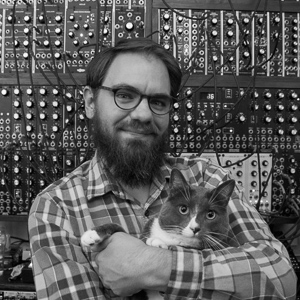
J onathan Snipes is a composer and sound designer for film and theater, living in Los Angeles. He occasionally teaches sound design in the theater department at UCLA, and is a member of the rap group ‘clipping.’ Film credits include A Glitch in the Matrix (2021), The El Duce Tapes (2020), Mope (2020), Trespassers (2019), Rebirth (2016), Starry Eyes (2014), and Room 237 (2013).
Learn more about Jonathan’s work at www.jonat8han.com
• How did you get started as a composer? What was your very first score-to-picture gig, and what was that experience like for you?
My first feature score was a film called Reversion in 2008 for director Mia Trachinger. It was a small, low budget indie with a smart take on time travel. It played at Sundance. There was only about 20-30 minutes of music in the movie, and I got paid $200, I think.
Later that year, I scored Mask of the Ninja for Spike TV, which was 90-minutes through composed. I had to write all the music in 3 weeks.
These were two vastly different experiences in a short amount of time. I spent a lot more time on the music for Reversion, just because Mia was much more involved. I did a lot of revisions of those cues, and spent a ton of time getting them right.
I don’t think I got a single note on Ninja; that score is basically a first-draft.
• Any advice you’d share on how to land a composing job in the film industry?
I’ve gotten most of my jobs from friends or by reputation. So I would advocate making a lot of music and saying yes to everything. If you’re not working on a movie, make an album. Maybe someone will hear that album and want you to score their movie?
• What were some essential lessons you’ve learned throughout your career?
The director is always right, even when they’re not. Never refuse to do a revision or take a note. They’re hearing something you aren’t, and they probably have a better idea of how to support and serve their movie than you do.
Anyone can write good music. Making the music fit and keeping the collaboration productive and friendly is actually the job.
If the request seems impossible, you just haven’t figured out the right way to accomplish it yet.
If you think the director is just plain wrong, it’s probably because you don’t understand their movie.
Anyone can write good music. Making the music fit and keeping the collaboration productive and friendly is actually the job.
• Any favorite tricks and workflows tips that help when composing for film?
Organization is key. Make sure you can always go back to any version of a cue anytime.
When the director says, “Wait, there was this thing in version 2 I liked,” and you’re on version 5, make sure you can find it and you know what they’re talking about.
I have a Google doc spreadsheet that keeps track of the total amount of time I need to write for a movie, and the amount of time I’ve written. It’s so easy to fall behind if you’re not hitting daily writing goals.
Anything you can do to save time converting/delivering/synchronizing files will help you spend more time writing music.
Understand timecode. Learn Pro Tools. Get into tools like Keyboard Maestro and Automator. Make your software work for you. Anything you can automate, do it.
Keep incredibly good notes and documents. Your cue sheet should be immaculate.
• What are your favorite sites and resources for composers?
I learned most of what I know by working with other composers. I was lucky enough to do a couple of films and a series with Bear McCreary pretty early on; before I got my first feature. So by the time that came around, I had already been through the machine a bit and learned things like cuesheet conventions, timecode, etc. And it turns out that opening someone else’s cues and looking at their markers is a pretty good way to get inside their head about what decisions they’re making.
Because I compose so much with field recordings and have a sound design background, I mostly find myself reading and listening to sound design related sites, blogs, podcasts, etc.
The “Field Recording” and “Echo” slack groups have become great resources recently, as well as cdm.link , the tonebenders podcast, and yes also the A Sound Effect blog :-)
On YouTube, I’ve been watching way too much “Reaper Blog” lately, as I’m working hard on making the transition to Reaper as my DAW of choice. I also like David Hillowitz and Christian Henson’s channels.
My main source of inspiration is probably music itself, though. I listen to a ton of music. I love bandcamp — the artist-driven model, the full quality (FLAC) files, the social aspect (I follow a lot of fan accounts of musicians and journalists I like and find new music that way) and the journalism! Bandcamp journalism has turned me onto a vast majority of my favorite albums over the past few years.
• What’s one special thing you did to become a successful composer?
I said “yes” to a movie that seemed like a terrible idea on paper. In 2011, I was approached by Rodney Ascher to score Room 237, his documentary about The Shining. It was a no-budget documentary made by a friend of a friend with a really tight turnaround, entirely composed of archival footage he didn’t think he’d be able to license. So it was probably going to come out for free on YouTube and that would be the end of it.
Always say “yes” to a thing you love and that you know you can make your own.
Seemed like a no-brainer to turn it down, until I watched it. It was immediately the kind of movie I knew I wanted to be doing, so I had to find a way to work on it. That movie ended up going to Sundance, and is still one of my most well-known scores. It’s how I’ve gotten so much work ever since. Always say “yes” to a thing you love and that you know you can make your own. By now, I’ve done four features with Rodney and numerous shorts. He’s become a key collaborator in my creative life.
BONUS: Expand your skillset with the free Sound Success Guide:
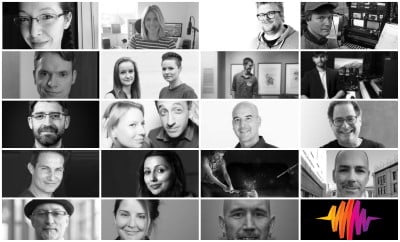 Want to branch out beyond composing? Learning new sound skills can open up opportunities for additional revenue – and with the (entirely free) 60+ page Sound Success Guide, you get insights from 20 industry experts on how to get started and succeed in 18 different types of audio jobs:
Want to branch out beyond composing? Learning new sound skills can open up opportunities for additional revenue – and with the (entirely free) 60+ page Sound Success Guide, you get insights from 20 industry experts on how to get started and succeed in 18 different types of audio jobs:
Click to download (.zip)
Click to download(.PDF)
↑ Back to top
A big thanks to Pinar Toprak, Nainita Desai, & Jonathan Snipes for sharing their valuable insights with us!
Want the free Composer Success Series e-book as soon as it’s released? Sign up to be the first to get it here
• Charlie Clouser – composer on the Saw franchise, Fox’s Wayward Pines, CBS’s Numb3rs, & NBC’s Las Vega
• Sherri Chung – composer on The CW’s Batwoman and Riverdale, NBC’s Blindspot, and CBS’s The Red Line
• Cindy O’Connor – composer on ABC’s Once Upon a Time
• Inon Zur – composer on Fallout, Dragon Age, Prince Of Persia, Outriders, and The Elder Scrolls.
• Gareth Coker – composer on the Ori franchise, Studio Wildcard’s ARK: Survival Evolved, & the upcoming Halo Infinite.
• Elyssa Samsel and Kate Anderson – composers on “The Book Thief,” “Between the Lines,” & Disney Animation’s Olaf’s Frozen Adventure
• Daniel Kluger – composer on the play “The Sound Inside,” “Oaklahoma!” (2019), & “Judgement Day”
• Jason Graves – composer on Dead Space, Tomb Raider , Moss , and more.
• Peter McConnell – composer on Hearthstone: The Boomsday Project, Broken Age Act 2 (2013), and Psychonauts 2.
• Winifred Phillips – composer on Lineage, Assassin’s Creed, Total War, God of War, The Sims, and LittleBigPlanet.
• Ronit Kirchman – composer on Evil Eye, Limetown, and The Sinner.
• Zach Robinson – composer on the Impractical Jokers movie, the documentary series Artbound, Quibi’s Die Hart, Norwegian comedy The Oilfund, Josie and Jack, and the video game Cobra Kai: The Karate Kid Saga Continues.
• Alec Puro – composer on Wicked Tuna, Black Summer, The Crew, Running Wild with Bear Grylls, and more.
• Ariel Marx – composer on American Horror Stories on FX, Children of the Underground mini-series on FX, Hulu em>, and the Roku Original docu-series What Happens in Hollywood.
• Matthew Earl – composer on Virtual Reality games/experiences such as the Star Trek: Dark Remnant and Men in Black: Galactic Getaway VR simulation rides.
• Zach Robinson – composer for the Evermore Adventure Park, Knott’s Berry Farm, Queen Mary Chill, Dreamland (UK), Los Angeles Haunted Hayride, Dent Schoolhouse, and The Void 4D virtual reality games.


